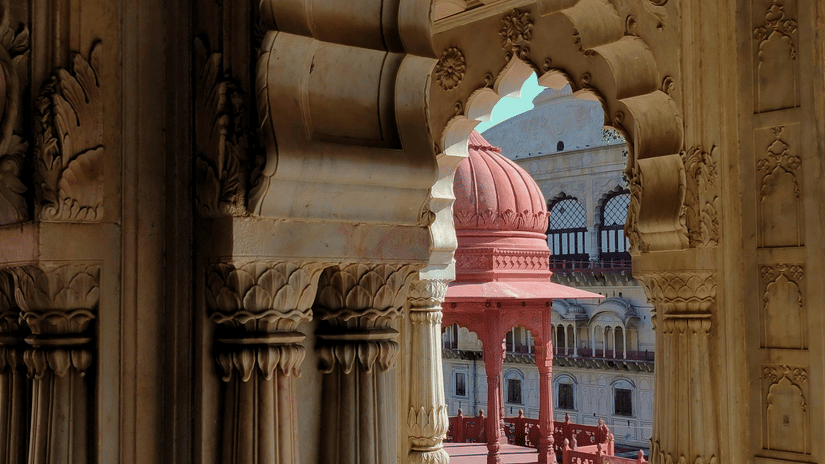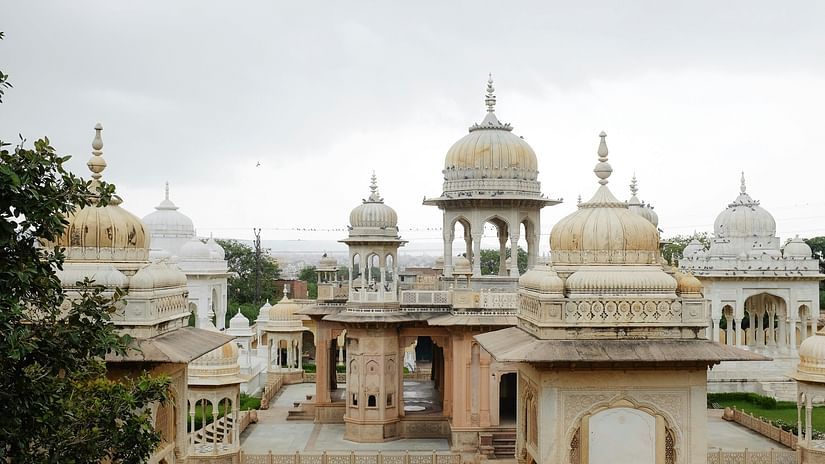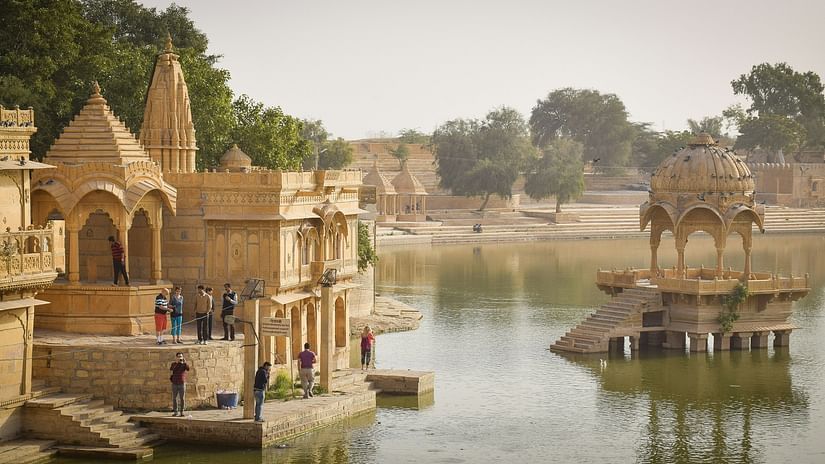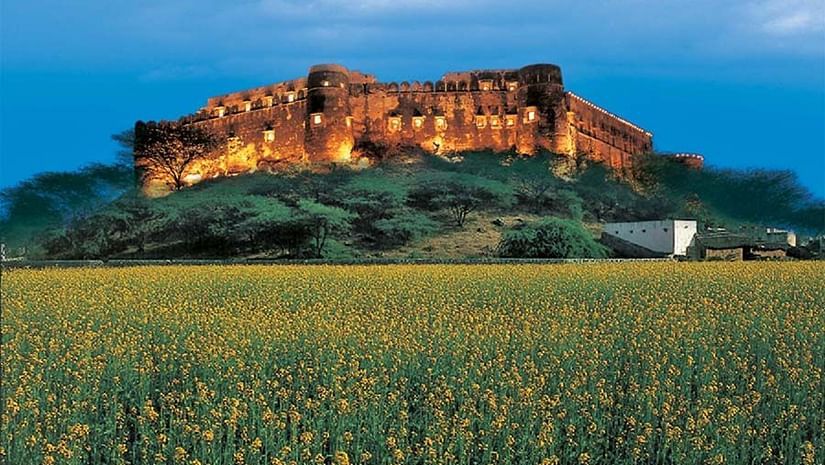- Shopping in Kochi
- New Year Celebration in Rajasthan
- Christmas in Goa
- Trip from Delhi to Alwar
- New Year Celebration in Goa
- History of Maratha Empire
- New Year in Kochi
- Places of Interest in Gwalior
- Bala Quila, Alwar
- Jet Ski in Goa
- Paradesi Synagogue, Kochi
- Explore Gwalior Fort
- Visiting the Vast History: Kochi Mattancherry Palace
- Heritage Wedding in Rajasthan
- Tourist Attractions in Gwalior
- Hotel in Tijara
- Cabo De Rama Beach
- Matsya Festival
- Trip from Bangalore to Goa
- Tourist Attractions in Patiala You Shouldn't Miss
- Jagannath Mela in Alwar
- Waterfalls in Goa
- Ideal Places for a Short Trip near Delhi
- Hidden Gems in Rajasthan
- Delhi to Sariska National Park: Trip Guide
- Traveller’s Guide to Goa Carnival
- Weekend Trip from Gurgaon
- Trip to Rajasthan with Family
- Delhi to Rishikesh to Nainital
- Delhi to Patiala Tour Guide
- New Year Celebration Near Delhi NCR
- Christmas Celebration in Tijara Fort Palace, Alwar, Rajasthan
- Nainital in the Winter Season
- Sunburn Goa 2024
- Trip to Alwar
- Water Sports in South Goa
- New Year Eve Party in South Goa
- Moosi Maharani Ki Chhatri
- Siliserh Lake
- Must try dishes in Rajasthan
- Best Places to Visit around Jaipur
- Solo Trip to Rajasthan
- Sariska National Park
- Places to visit in Rajasthan in December
- Staycation Near Delhi NCR
- Best Holiday Destinations Near Delhi
- Best Resorts Near Delhi for Family
- Vacations near Delhi
- Goa in Summer Season
- Naina Devi Temple, Nainital
- Best Time to Visit Rishikesh
- Tijara Ji Jain Temple
- Must Visit Historical Sites in South Goa
- Local Food in South Goa
- Traditional Festivals of Rajasthan
- Naina Peak Trek
- Fatehpur Shekhawati
- Activities in Nainital
- Local Food in Tranquebar
- Alwar Famous Food
- Offbeat Places in Nainital
- Offbeat Places in South Goa
- Offbeat Places in Rajasthan
- History of Tharangambadi
- Best time to visit Nainital
- Best Beaches in South Goa
- History of Shekhawati
- The Best Beaches in Tamil Nadu
- Places to Visit in Shekhawati
- New Year Celebration in Nainital
- Weekend Trip in Tamil Nadu
- New Year in Goa
- Nainital Itinerary for 2 Days
- The Best Places to Visit in Patiala
- Places to Visit in Tharangambadi
- South Goa Itinerary for 3 Days
- Tourist Attractions in Alwar
- Kochi 2-day Itinerary
- Things to Do in South Goa
- Places to Visit in Gwalior
- Weekend Getaway from Jaipur
- Best Places to Visit in Alwar
- Best Time to Visit Alwar
- Places to Visit in Alwar
- Best Time to Visit Gwalior
- Literary Connections of Ramgarh: Tagore and Mahadevi Verma
- Things to Do in Alwar in Monsoon
- Exploring the Festivals of Alwar
- Everything You Need to Know About Betul, Goa
- Things to Do in Kochi at Night
- Uttarakhand Itinerary for 7 Days
- Best Time to Visit Kochi
- Visit The Mesmerising Hill Stations in South India
- The Best Places to Visit Near Nainital
- A Weekend Getaway to Ramgarh: Travel Guide
- Explore The Magical Cochin Backwaters
- The Majestic Coonoor to Ooty Toy Train
- The Best Vacation Spots Near Chennai
- Must Visit Places in Kerala
- Destination Wedding in Rajasthan
- Exploring the Orchards in Ramgarh
- Explore the Museums of Tranquebar
- Masilamani Nathar Temple, Tharangambadi
- Things to Do in Kesroli
- Best Places to Visit in South India in January
- Exploring the Tamil Nadu Coastline
- Places to Visit in Gwalior at Night
- Places to visit in Rajasthan in Winter
- Unexplored Treasures of Uttarakhand
- A Visit to Mangalavanam Bird Sanctuary
- Royal Rajasthani Weddings
- Rajasthan Itinerary for 7 days
- Into the Wilderness of Rajasthan’s National Parks
- Explore the Historic Town of Neemrana, Rajasthan
- Enchanting Lakes of Nainital
- A Dive Into the Royal History of Alwar
- Trails and Treks near Nainital
- The Seven Most Frequented Places in Rishikesh
- Kochi: The Queen of the Arabian Sea
- Fairy Queen: The Oldest Working Steam Locomotive
- Forts and Palaces of Alwar
- The Unparalleled Art and Culture of Madhya Pradesh
- Best Beaches To Visit in Cochin
- A Spiritual Journey to the Temples in Alwar
- Handicrafts of Rajasthan
- Places to Eat Street Food in Gwalior
- Wellness Retreats in Rishikesh
- The Danish History of Tranquebar
- Of Mystical Spaces and Hidden Treasures
- Rehabilitating Our Roots in Ruins... A Meet with Mr Aman Nath
- Our Annual Getaway to the Ramgarh Bungalows
- Experience Gwalior The Royal Way With Deo Bagh
- Living it up at a 14th Century Fort
- The Best of Both Worlds - Delhi and Jaipur
- Alwar City - Attractions
- Gwalior - The Tourist Capital
- Drivable Weekend Getaway from Delhi-NCR
- Hiking and Trekking Trails near Jaipur
- Safe Weekend Getaway from Delhi
- Trek Trails from Rishikesh
- Things to do Around Tranquebar Fort
- Majestic Temples of Gwalior
- Tea Plantations of Coonoor
- Fort Stay in Alwar
- Best Places to Visit in Tamil Nadu
- Shopping in Gwalior
- The Chinese Fishing Nets of Kochi
- Exotic Swimming Experiences near Delhi
- Ketty Valley, The Second Largest Gorge in the World
Located in the heart of Alwar, Rajasthan, Moosi Maharani Ki Chhatri stands as a significant symbol of Rajasthani heritage and history. This intricately designed cenotaph (chhatri) is a blend of Rajput and Mughal architectural styles, built to honour the loyalty and courage of Maharani Moosi, the queen who performed sati—an ancient Hindu custom of self-immolation—on her husband’s pyre. This historical monument, set against the backdrop of the Aravalli Hills, continues to draw visitors with its beautiful architecture and the moving story of devotion it symbolises.
The History Behind Moosi Maharani Ki Chhatri
The story behind Moosi Maharani Ki Chhatri dates back to the early 19th century. It was constructed in 1815 by Maharaja Vinay Singh of Alwar in memory of his father, Maharaja Bakhtawar Singh, and his queen, Maharani Moosi. Maharaja Bakhtawar Singh was known as a brave ruler who contributed significantly to Alwar’s prosperity. It was Maharani Moosi who left an indelible mark in the annals of history by committing sati—a ritual in which a widow would sacrifice her life on her husband’s funeral pyre. In honour of her supreme sacrifice and loyalty, Maharaja Vinay Singh built this cenotaph as a tribute to the king and his queen. The monument is a testament to the love, sacrifice, and grandeur of Alwar’s royal heritage. The structure is a beautiful fusion of architectural brilliance, showcasing the glory of Rajput kings and their queens in Rajasthan’s rich history.


Architectural Significance
Moosi Maharani Ki Chhatri is renowned for its exquisite architecture, which mirrors the magnificence of Rajputana culture. The cenotaph has two floors, with the lower level made from red sandstone and the upper floor constructed with white marble. This combination of colours brings a striking contrast, especially when viewed under the sunlight, casting different hues across the structure throughout the day.
The intricately carved pillars and arches of the cenotaph and the delicate floral designs and murals depicting scenes from royal life and mythology of the ceiling blend in perfectly. The chhatri’s marble domes and jharokhas (overhanging enclosed balconies) are prime examples of the Rajput-Mughal architectural blend, adding to the grandeur of the structure. Visitors are often mesmerised by the intricate craftsmanship on display, which has been well-preserved over the centuries. Inside the cenotaph, statues of Maharaja Bakhtawar Singh and Maharani Moosi stand, symbolising their eternal bond. The chhatri is surrounded by a large water tank, further enhancing the serene and peaceful atmosphere enveloping the monument.


The Cultural Importance of the Cenotaph
Beyond its architectural beauty, Moosi Maharani Ki Chhatri holds deep cultural significance. It represents the devotion, love, and sacrifice of a queen for her king, which is why it continues to be revered by locals and visitors alike. The cenotaph has become a site where people reflect on the virtues of loyalty and selflessness, which were held in high regard in Rajasthan’s royal past. This monument is also a favourite spot for photographers and history enthusiasts who want to capture the timeless beauty of Rajasthani architecture. The chhatri, surrounded by lush greenery, makes it an ideal location for cultural exploration and nature appreciation.
Stay at Hill Fort-Kesroli: 14th Century, Alwar
While visiting Moosi Maharani Ki Chhatri, enhance your experience by staying at Hill Fort-Kesroli - 14th century, another historical gem in Alwar. This beautifully restored fort offers Rajasthani heritage and modern luxury. The 14th-century fort, perched atop a hill, provides panoramic views of the surrounding countryside and offers a unique chance to stay within the walls of a centuries-old fort. At Hill Fort-Kesroli, you’ll enjoy comfortable accommodations, a large swimming pool, an in-house restaurant, a serene environment, and the opportunity to relive the grandeur of Rajasthan’s regal past. Whether exploring the nearby monuments or simply unwinding at the fort, your stay will be magical.

Moosi Maharani Ki Chhatri and a stay at Hill Fort-Kesroli together create an unforgettable journey into Rajasthan’s rich history and culture.